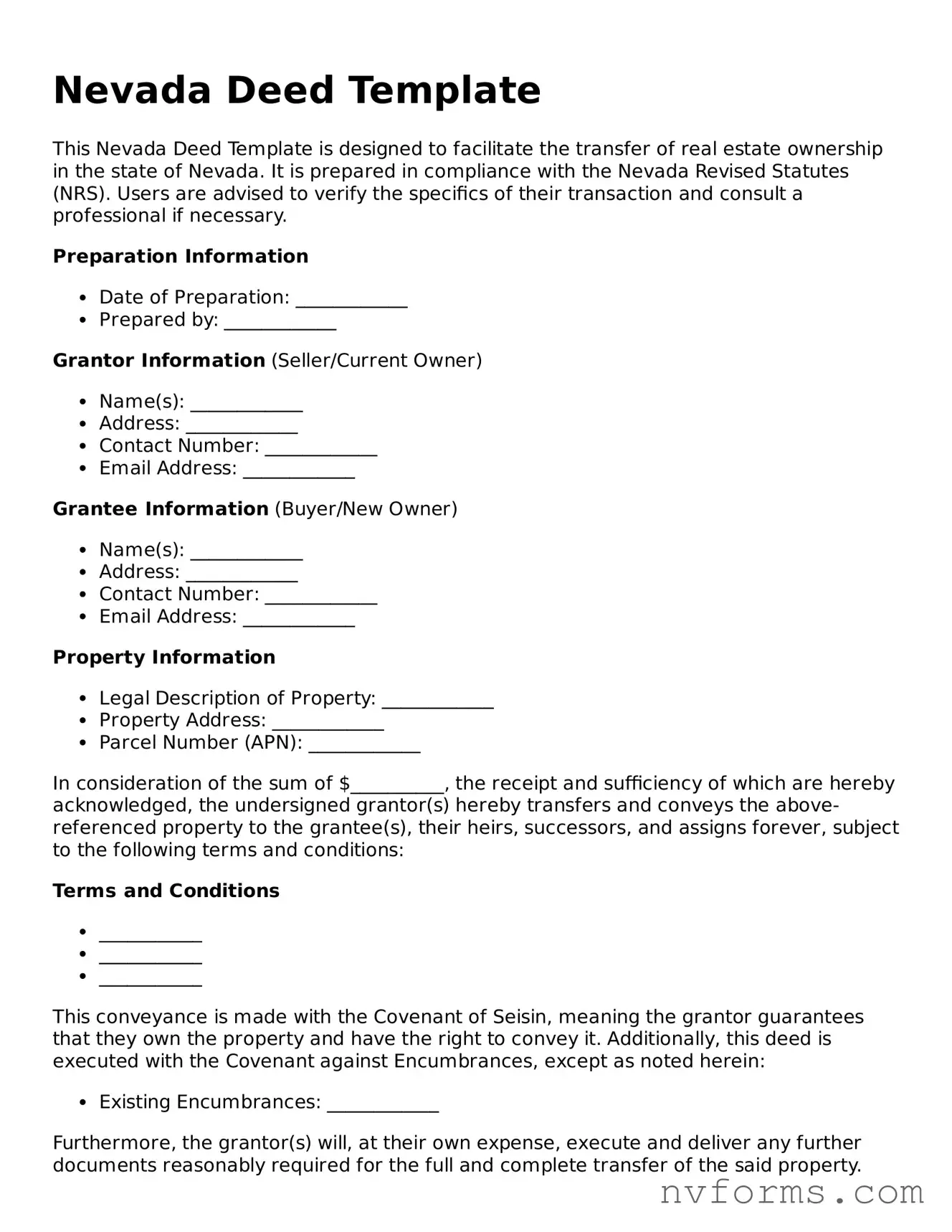Nevada Deed Template
This Nevada Deed Template is designed to facilitate the transfer of real estate ownership in the state of Nevada. It is prepared in compliance with the Nevada Revised Statutes (NRS). Users are advised to verify the specifics of their transaction and consult a professional if necessary.
Preparation Information
- Date of Preparation: ____________
- Prepared by: ____________
Grantor Information (Seller/Current Owner)
- Name(s): ____________
- Address: ____________
- Contact Number: ____________
- Email Address: ____________
Grantee Information (Buyer/New Owner)
- Name(s): ____________
- Address: ____________
- Contact Number: ____________
- Email Address: ____________
Property Information
- Legal Description of Property: ____________
- Property Address: ____________
- Parcel Number (APN): ____________
In consideration of the sum of $__________, the receipt and sufficiency of which are hereby acknowledged, the undersigned grantor(s) hereby transfers and conveys the above-referenced property to the grantee(s), their heirs, successors, and assigns forever, subject to the following terms and conditions:
Terms and Conditions
- ___________
- ___________
- ___________
This conveyance is made with the Covenant of Seisin, meaning the grantor guarantees that they own the property and have the right to convey it. Additionally, this deed is executed with the Covenant against Encumbrances, except as noted herein:
- Existing Encumbrances: ____________
Furthermore, the grantor(s) will, at their own expense, execute and deliver any further documents reasonably required for the full and complete transfer of the said property.
IN WITNESS WHEREOF, the grantor(s) have hereunto set their hand(s) and seal(s) this ____________ day of ____________, 20__.
Grantor's Signature: ____________
State of Nevada )
County of ____________ )
Subscribed and sworn before me on this ____________ day of ____________, 20__, by ____________.
Notary Public: ____________
My Commission Expires: ____________
This document is not a substitute for legal advice or services. Consult with a legal professional for information regarding recording requirements, tax implications, and other legal aspects related to the transfer of real property in Nevada.
